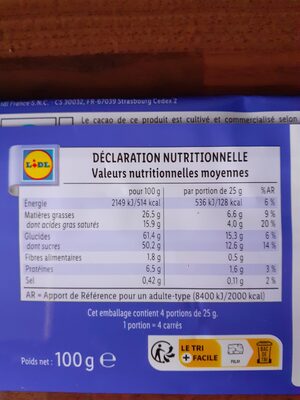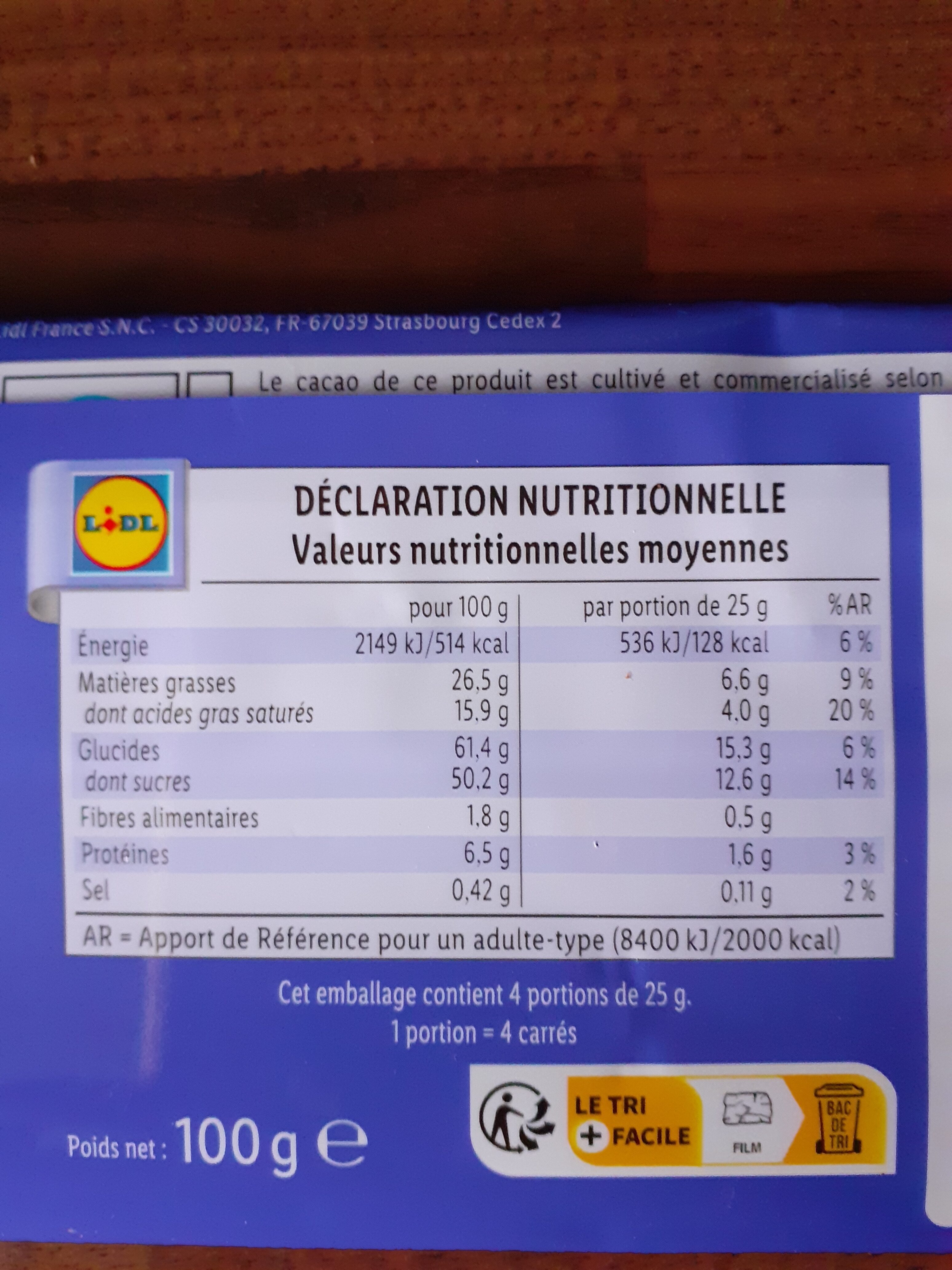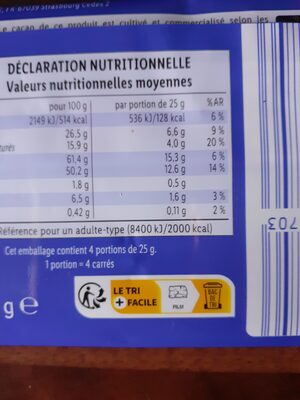Crusti Choc - Fin Carré - 100g
Code-barres ambigu : ce produit utilise un code-barres destiné à l'usage interne d'une entreprise. Il est possible que différents producteurs ou magasins utilisent ce même code-barres pour des produits différents.
×
La page de ce produit n'est pas complète. Vous pouvez aider à la compléter en l'éditant et en ajoutant plus de données à partir des photos que nous avons, ou en prenant plus de photos à l'aide de l'application pour Android ou iPhone / iPad. Merci!
×
Code-barres: 20488703
Dénomination générique : Chocolat au lait avec 15 % de céréales croustillantes
Quantité : 100g
Conditionnement : Composites multicouches, Papier et plastique, Étui
Catégories : Snacks, Snacks sucrés, Cacao et dérivés, Chocolats, Chocolats au lait, Chocolats aux céréales, Tablette de chocolat au lait, Chocolats au lait aux céréales croustillantes, es:Cereales crujientes
Labels, certifications, récompenses :
Commerce équitable, Fairtrade International, Fabriqué en Allemagne, Max Havelaar, Pur beurre de cacao, Triman, es:Recicla-amarillo




Origine des ingrédients : Espagne, es:Non indiqué
Lien vers la page du produit sur le site officiel du fabricant : http://www.lidl.es
Magasins : Lidl
Correspondance avec vos préférences
Signaler un problème
Sources de données
Produit ajouté le par openfoodfacts-contributors
Dernière modification de la page produit le par inf.
Fiche produit également modifiée par angelbcn, bathorypeter, beniben, billoute720, bronx89, bugmenot, charlesnepote, date-limite-app, feat, focccus, foodrepo, guittoon, halal-app-chakib, itsjustruby, john-dumpling, kiliweb, laramba, moon-rabbit, packbot, quechoisir, roboto-app, segundo, smoothie-app, xjohnny22, yuka.PasYY-W6NPcwM_rv14cJhhqyG8rfCv8JN1VXow, yuka.UnB3SEtKOEFwdWdObHZBbStqZlA0dHRTNTZXSlpuaVhCOFU3SUE9PQ, yuka.sY2b0xO6T85zoF3NwEKvlnYfAujwnDTmLBfSt262mduhL67vcPF26JLzKKs.















